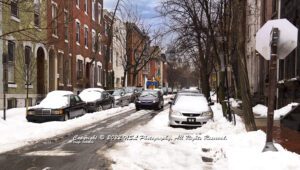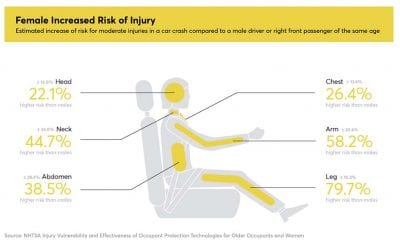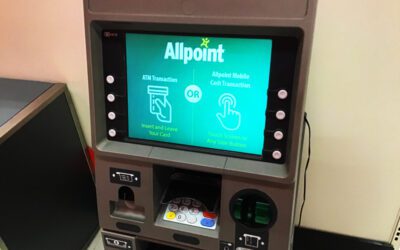Holiday winter driving can be perilous when ice or snow storms occur. I’ve got 12 great tips to help you drive safely.

Philadelphia Street Scenes – Snowfall.
Winter has come to the northern hemisphere. Across much of the US, snow is in the forecast this week. You will face holiday winter driving. Many will drive to celebrations in wintry weather conditions.
Snow and ice on roads result in higher accident rates, plus stuck and abandoned cars. Driving in snow and ice is hard enough in your car, but in an unfamiliar rental vehicle, often smaller than your car at home, driving in snow and ice can be more difficult.
I’ve got 12 tips for holiday winter driving, whether you’re in your car or a rental car.
When renting a car to drive in winter stay away from “rear wheel drive” drives that don’t track as well as other cars.
Choose your rental car wisely:
When making a rental car reservation for winter, where you’ll likely encounter ice and/or snow, consider a “four-wheel drive” or “all-wheel drive” vehicle. At the least, get a “front-wheel drive” vehicle. These cars track better than “rear wheel drive” cars when roads are slippery because they pull, rather than push, the car.
Braking safety tip:
Remember that however a car is propelled, it doesn’t affect braking. Cars have brakes on all wheels. No matter how your car is propelled, if it’s on roads covered with ice and/or snow, it will take longer for your car to stop than on a dry pavement. Leave extra space for you to stop on icy and snowy roads.
It’s critical to have the right tires to drive safely in winter.
Spare Tire:

It’s important to understand that “donut” spares are not meant to be driven long distances. Particularly in winter weather, if you’re using a spare tire, only drive far enough to have the bad tire repaired or replaced.
Tire Tread:
Whether it’s your car or a rental, in winter, before you drive your own or even put your bags in your rental car, check its tires. Look carefully at each tire’s tread, including the spare tire, whether it’s a “donut” or full spare. Tire Rack recommends that drivers expecting to encounter ice or snow-covered roads have at least 5/32 inch (0.4 cm) tread depth on each tire. Tires need adequate tread depth in wintry conditions to compress snow in their grooves and release it as they roll to provide essential vehicle traction, tracking, and mobility.
Tire Inflation:
Make sure each tire, including the spare, is properly inflated. When correctly inflated, tires are safer and less likely to fail at high speeds. Improperly inflated tires increase stopping distances, will skid further on wet, icy, and snowy surfaces, and are less able to prevent vehicle turnovers. Just like the other tires, the spare must be properly inflated.
Make sure your car has a complete jack assembly and you know how to use it safely if you must use the spare tire in your vehicle.
Jack Assembly:
To use the spare tire, you’ll need a jack assembly. Be sure the entire jack assembly is in the vehicle, and be certain you know how to use it. I’ve often found that the jack assembly or at least part of it was missing from the car I was renting.
In most cars, there are a finite number of specific spots along the chassis where a jack can be safely placed and used. Other locations may be unsafe and unstable to hold the car up. If you don’t use the correct spots for the jack, the car could collapse on you or damage the car.
Part of the jack assembly is the tire iron which allows you to unscrew the wheel lug nuts. Sometimes it’s stowed separately from the jack assembly. Be sure you know where it is. Some cars have wheel lock lug nuts. Check the lug nuts to know if any are locks. If they are, be sure you know where the lug nut key is.
Ensure your visibility while driving in winter by ensuring your windshield wipers and washers are working optimally.
Windshield wipers:
Ensure your windshield wipers work properly and the wiper blades aren’t worn, warped, or inflexible. It’s essential for your safety that your wipers will clean off rain, snow, sleet, and road spray cleanly. If your car has a rear window wiper, make sure it’s fully operational. When you check your wipers, ensure your car heater and defroster (front and rear) are also working well.
Windshield washer:
Check to ensure your windshield washer reservoir is filled with a non-freezing mixture. In winter, windshields can get filthy from road spray, and you can quickly empty the washer’s reservoir. Many cars have both a windshield and a back window washer. Make sure they both work well.
Fuel or Charge:
You should never leave home or the rental car lot for a winter holiday without a full tank of fuel or a full charge if you have an electric car. In winter weather, it’s possible to become stuck or stranded for a long time for various reasons, including being behind an accident completely blocking an Interstate, where backing out isn’t possible. Always fill your fuel tank if half empty or recharge your EV-car battery if less than half a charge, as soon as possible, so you’re better prepared for emergencies.
If you’re driving in the winter, you’ve got to be prepared for emergencies.
Weather and Travel Advisories:
Before departing on your driving journey, listen to weather and travel advisories for your route. If you’ll have to drive through bad weather, be smart and seriously consider altering your plans to stay safe.
Emergency car numbers:
If you’re driving your car or a rental car, make sure you have phone numbers to call for emergency help in case of an accident, breakdown or other emergencies. If you’re traveling internationally, recognize that you might not be able to call a toll-free phone number with your cell phone from home, so make sure you have local numbers to call in case of an emergency.
Winter emergency car kit:
Whether you’re driving your car on your winter journey or a rental car, I highly recommend that you have a winter emergency car kit.
Your kit should include, at a minimum: a cellphone, cellphone charger, LED flashlight, a notepad, pen and pencil, and a simple tool kit with a pair of screwdrivers, pliers, and an adjustable wrench which you can put in a plastic bag. Your kit should also have travel duct tape, a first aid kit, a warm blanket, waterproof matches, an ice scraper, plus some water and snacks.

Holiday travel should be a lot of fun, but to ensure that, you must be prepared, smart, and safe. Have a great holiday season!
(Image: Philadelphia Street Scenes – Snowfall. Copyright © 2022 NSL Photography. All Rights Reserved.)
READ ALSO:
Why I love to travel and enjoy vacations past a second time
The EU cellphone ban is over next year and guaranteed to aggravate most fliers
After many years working in corporate America as a chemical engineer, executive and eventually CFO of a multinational manufacturer, Ned founded a tech consulting company and later restarted NSL Photography, his photography business. Before entering the corporate world, Ned worked as a Public Health Engineer for the Philadelphia Department of Public Health. As a well known corporate, travel and wildlife photographer, Ned travels the world writing about travel and photography, as well as running photography workshops, seminars and photowalks. Visit Ned’s Photography Blog and Galleries.



